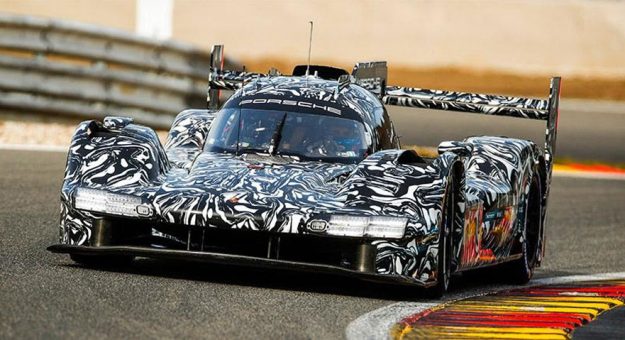DAYTONA BEACH, Fla. — The people working on the design and implementation of the new LMDh car, which will debut in the IMSA WeatherTech SportsCar Championship’s new Grand Touring Prototype class in 2023, have been working hard to get the project ready — sometimes with people they usually consider competitors.
And they’ve done it knowing and being motivated by the project’s importance.
“We walked into this knowing it was a big deal,” said Paul Barton, assistant vice president of Xtrac Inc., who has been working alongside engineers with other firms to design and build components for the car. “As we got more involved, it definitely hammered home how significant it is.”
The significance lies in the scope and breadth of the project. The next generation of the top prototype class, the LMDh design is a groundbreaking change for sports car racing, taking the series another step forward technologically.
LMDh cars will be powered by a traditional internal combustion engine, developed by each participating manufacturer, and paired with a single-source hybrid system that harvests kinetic energy that would otherwise go wasted through heat from braking and stores it to batteries, to be deployed as propulsion energy during acceleration.
The hybrid system will create a more fuel-efficient, ecologically-friendly race car. The first on-track test of the LMDh took place back in January at Barcelona with Porsche Penske Motorsport. It was ruled a success, right down to the near-silence of the car launching under battery power in the pits.
“As an engineer, you don’t often get the chance to be involved at the start of something and get to see it through the point where it actually runs on track,” said Bill Pearson, IMSA’s senior engineer for performance and simulation. “To actually see the car going around in circles was fantastic.”
Working within specifications and regulations for the new car, engineers at Xtrac, Williams Advanced Engineering and Bosch collaborated to marry the hybrid system components — the gearbox, motor generator unit and battery — into a tight space, while working around the specifications of the various chassis constructors and manufacturers.
That required hours of collaboration among engineers from all participants.
“There’s a lot of real tight collaboration with Bosch to define it and get the motor to fit in that space,” Barton said. “Once we got past that hurdle, then the question would be for constructors to all agree on suspension loads and mounting points in terms of the wishbones and tow links. That was the biggest part of the collaboration – working together with constructors.”
LMDh cars will be eligible for IMSA’s GTP class and the FIA World Endurance Championship’s (WEC) Hypercar class, allowing teams to compete across sanctioning bodies running either an LMDh or LMH car under convergence of regulations between IMSA and the Automobile Club de l’Ouest.
Porsche’s unveiling of its LMDh in Barcelona enthused officials and competitors in both series. A follow-up test this week at Spa in Belgium fueled the fire even more.
“Certainly, Porsche is playing a strong role at the moment with the initial commissioning of the hybrid system in a vehicle,” said Simon Hodgson, IMSA’s vice president of competition. “But all manufacturer partners have been involved in that process, including the chassis constructors. There’s full awareness between that group and the hybrid group, the powertrain partners, and obviously the ACO and IMSA.”
Getting it to the track meant cross-pollination among engineers from several manufacturers. It meant meetings upon meetings, followed by more meetings.
“We would meet with all of the constructors and say, ‘So, you wanted this and needed that, and we’re thinking we’ll do a six-bolt pattern here where we’re within 3 millimeters of your requirement and 2 millimeters of yours,’” Barton said. “There were a lot of meetings and a lot of shared CAD (computer-aided design).
“People told us what they wanted. Maybe it was within X or Y length of the transmission. There was a lot of real close work for all of those guys to come up with an agreement.”
The cooperation led to something profound: A new, hybrid-based platform that will move sports car racing to a new era and allow the top class to be shared across sanctioning bodies and continents.
“(It’s) a project that is going to be a legacy moment for our sport of endurance sports car racing,” IMSA President John Doonan said. “When you imagine, and already know, the number of manufacturers that are committed to compete, that’s remarkable. When you think about the build-up of a common, single-source hybrid system, and the folks at Bosch and Williams and Xtrac that have come together for that, that’s remarkable.”
